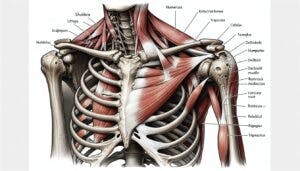 Shoulder pain can be a real pain in the…well, shoulder! Whether it’s a dull ache or a sharp twinge, shoulder pain can significantly impact your ability to perform everyday tasks and enjoy your favorite activities. But fear not, because relief is within reach! In this blog, we’ll delve into the common causes of shoulder pain, explore effective treatments, and share essential exercises to help you on the road to recovery.
Shoulder pain can be a real pain in the…well, shoulder! Whether it’s a dull ache or a sharp twinge, shoulder pain can significantly impact your ability to perform everyday tasks and enjoy your favorite activities. But fear not, because relief is within reach! In this blog, we’ll delve into the common causes of shoulder pain, explore effective treatments, and share essential exercises to help you on the road to recovery.
Understanding the Root Causes:
Before we dive into treatment options, let’s take a moment to understand what might be causing your shoulder pain. Common culprits include:
- Rotator cuff injuries: Tears or inflammation in the muscles and tendons surrounding the shoulder joint.
- Shoulder impingement: When the tendons of the rotator cuff become pinched between the bones of the shoulder.
- Frozen shoulder: A condition characterized by stiffness and limited range of motion in the shoulder joint.
- Arthritis: Degeneration of the shoulder joint, leading to pain and inflammation.
Treatments for Relief:
When it comes to treating shoulder pain, a multi-faceted approach is often most effective. Depending on the severity and underlying cause of your pain, treatments may include:
- Rest: Give your shoulder time to heal by avoiding activities that exacerbate the pain.
- Ice and heat therapy: Apply ice packs to reduce inflammation and heat packs to promote blood flow and relaxation.
- Pain management: Over-the-counter medications like ibuprofen or acetaminophen can help alleviate discomfort. Remember this is altering your symptoms, so they should only be used in the short term while you are treating the root cause of the pain or injury.
- Physical therapy: A specialized physical therapy program can target the muscles and tissues surrounding the shoulder joint, promoting healing and restoring function.
Essential Exercises for Recovery:
Now, let’s get moving! Here are some simple yet effective exercises to help you recover from shoulder pain:
- Pendulum swing: Stand with your unaffected arm supported on a table. Lean forward and let your affected arm hang down. Swing your arm gently in circles, first clockwise and then counterclockwise.
- Wall slides: Stand with your back against a wall and your arms at your sides. Slowly slide your arms up the wall as high as you can, then lower them back down.
- Shoulder blade squeezes: Sit or stand with your arms at your sides. Squeeze your shoulder blades together as if you’re trying to hold a pencil between them, then relax.
- Rotator cuff strengthening: Perform exercises like external and internal rotation with a resistance band to strengthen the muscles of the rotator cuff.
- Shoulder stretches: Gently stretch the muscles of the shoulder joint by performing exercises like the cross-body stretch and the towel stretch.
Shoulder pain may be a common complaint, but it doesn’t have to be a permanent one. By understanding the causes of your pain, seeking appropriate treatment, and incorporating targeted exercises into your routine, you can take proactive steps towards recovery and reclaiming your shoulder health. If you’re struggling with shoulder pain, don’t hesitate to reach out to us at Altitude Physical Therapy for expert guidance and support. Your shoulders will thank you!


